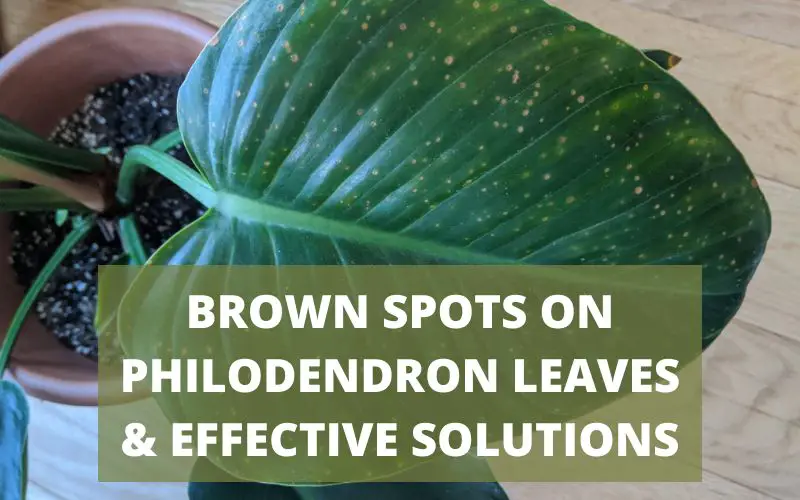Finding unsightly brown spots on the leaves of your prized philodendron plant can be worrying. But don’t panic – these spots are usually symptomatic of underlying issues that can be corrected with a few tweaks to care and maintenance. Read on to learn the common causes of brown spots on philodendron leaves, along with tips to banish the spots and prevent their recurrence.
What Causes Brown Spots on Philodendron Leaves?
Brown spots can indicate a variety of problems. Here are some of the most common culprits:
- Overwatering – Excess moisture leads to soggy soil which damages roots and causes spotting on leaves.
- Underwatering – Allowing the soil to dry out too much also stresses the plant, causing brown crispy spots.
- Low humidity – Philodendrons thrive in humid conditions. Dry air can lead to brown leaf tips and margins.
- Sunburn – Too much direct sun scorches leaves, leaving brown sunburnt spots behind.
- Pests – Insects like spider mites suck nutrients, causing stippling damage.
- Diseases – Bacterial and fungal diseases cause brown leaf spots.
- Poor drainage – Wet soil encourages root rot, leading to brown spots.
- Nutrient deficiency – Lack of nutrients like nitrogen results in brown spotting.
- Chemical damage – Overfertilizing or using poor water quality stresses the plant.
How to Treat and Prevent Brown Spots on Philodendron
While brown spots can’t be removed from existing leaves, you can take steps to prevent new spotting and keep your philodendron healthy overall:
- Check soil moisture – Water only when the top few inches of soil are dry. Provide good drainage.
- Increase humidity – Use a humidifier or pebble tray to maintain 40-60% humidity.
- Filter bright light – Philodendrons want bright, indirect light. Filter harsh sun with curtains.
- Inspect regularly – Check closely for pests like spider mites and treat promptly.
- Apply fertilizer judiciously – Use a balanced houseplant fertilizer at half-strength during growing season.
- Prune affected leaves – Remove badly affected leaves to prevent disease spread.
- Improve air circulation – Allow space between leaves for air to circulate freely.
- Repot when necessary – Repotting in fresh soil encourages new healthy growth.
- Use purified water – Tap water may contain chemicals that damage leaves.
With some attentive care and ideal growing conditions, your philodendron will flourish with vibrant green, spot-free leaves! Be observant, diagnose the cause, and take preventive action at the first sign of spots.
Importance of Humidity
Philodendrons are tropical souls that crave humidity. Low humidity can lead to brown spots, a sign your plant is thirsting for moisture in the air. Consider a humidifier or a pebble tray to boost humidity levels, making your Philodendron feel right at home.
✂️ Pruning and Maintenance for Healthy Growth
Sometimes, you have to be cruel to be kind. Pruning isnt just about keeping your plant looking sharp; its about health. Snip off those brown, damaged leaves to prevent any further issues. And remember, cleanliness is next to godliness, so keep your pruning tools sterilized to avoid spreading any diseases.
Encouraging new growth is like cheering on a marathon runner. Its all about support and the right conditions. With proper pruning, your Split Leaf Philodendron will keep on keeping on, looking lush and gorgeous.
How to treat brown spots on Philodendron leaves ?
FAQ
How to treat brown spots on philodendron?
What does an overwatered philodendron look like?
Do brown spots on leaves mean overwatering?
- The Ultimate Guide to Growing Strawberries in Raised Beds - August 8, 2025
- No-Dig Garden Beds: The Easiest Way to Grow a Beautiful Garden - August 6, 2025
- How to Protect and Preserve Wood for Raised Garden Beds - August 6, 2025

